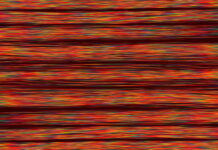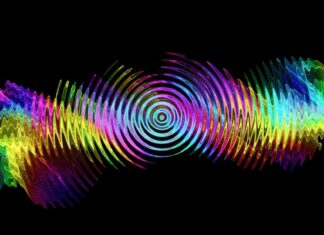Dino, a versatile term with various possible interpretations, can be associated with different contexts, ranging from popular culture to scientific domains. Let’s explore several facets of “Dino” and delve into ten important things related to its diverse meanings.
Cultural Icon in “The Flintstones”:
One prominent association with “Dino” comes from the classic animated TV series “The Flintstones.” In this context, Dino is a purple dinosaur and the loyal pet of the Flintstone family. Created by Hanna-Barbera, “The Flintstones” is an iconic show that aired in the 1960s, depicting the daily lives of a modern Stone Age family. Dino’s character is remembered for its friendly demeanor, adding a unique charm to the prehistoric setting of the series.
Paleontological Significance of Dinosaurs:
When “Dino” is used in a scientific context, it often refers to dinosaurs—the ancient reptiles that once roamed the Earth. Dinosaurs existed for an extensive period, spanning over 160 million years during the Mesozoic Era. Their fossils have played a pivotal role in paleontology, contributing to our understanding of evolution, ancient ecosystems, and Earth’s geological history. Key dinosaur species include the mighty Tyrannosaurus rex, the swift Velociraptor, and the horned Triceratops.
Modern Technological References:
Beyond its historical and cultural associations, “Dino” may find relevance in modern technology. It could be used as a name or abbreviation for a software project, programming language, or tool. In the dynamic world of technology, where developers often employ creative names for their creations, “Dino” could represent a contemporary entity. Without specific details, it remains an open-ended reference that showcases the term’s adaptability across different domains.
Slang and Colloquial Usage:
In certain regions or social groups, “Dino” might be employed as a slang term or colloquial expression. Its usage could vary widely, serving as a nickname, term of endearment, or even a playful expression. Slang terms often carry nuanced meanings that depend on the specific context and cultural background. Understanding the informal usage of “Dino” requires consideration of these diverse linguistic landscapes.
Cinematic and Literary Adaptations:
The concept of “Dino” extends beyond television and into other forms of media, including cinema and literature. Dinosaurs, as depicted in various movies and books, continue to captivate audiences. From the groundbreaking special effects in “Jurassic Park” to the imaginative storytelling in dinosaur-themed literature, the allure of these prehistoric creatures remains a significant aspect of popular culture.
Educational Impact of Dinosaur Studies:
The study of dinosaurs has not only contributed to scientific knowledge but has also had a profound educational impact. Museums around the world showcase dinosaur fossils, providing a tangible connection to Earth’s ancient past. Educational programs and initiatives use dinosaurs as a gateway to engage people, especially children, in the wonders of paleontology and natural history.
Evolutionary Insights from Dinosaur Fossils:
Dinosaur fossils offer valuable insights into the evolutionary history of life on Earth. By studying the anatomy, behavior, and ecological roles of dinosaurs, scientists can piece together the puzzle of how different species evolved over millions of years. Dinosaur discoveries continue to refine our understanding of evolutionary processes and the interconnectedness of various life forms throughout geological time.
Dino as a Name and Nickname:
The term “Dino” is not confined to prehistoric or technological realms; it is also used as a personal name. In various cultures, individuals may be named Dino, and the name might carry cultural or familial significance. Additionally, “Dino” serves as a nickname for people with names like Dean or Domenico, showcasing the informal and adaptable nature of the term in personal nomenclature.
Dino in Motorsports:
Beyond its associations with entertainment and science, “Dino” has a presence in the world of motorsports. The Ferrari Dino, named in honor of Enzo Ferrari’s son Alfredo “Dino” Ferrari, is a series of sports cars produced by the Italian automaker. These cars, introduced in the 1960s, are known for their sleek design and performance, representing a unique chapter in Ferrari’s history.
Dino as a Symbol of Timelessness:
Whether in the context of a beloved animated character, ancient reptiles, or modern technology, “Dino” serves as a symbol of timelessness. The enduring popularity of dinosaur-related themes and the adaptability of the term across different domains highlight its ability to transcend generations. “Dino” remains a cultural touchstone, weaving its way into the fabric of diverse narratives and societal interests.
Dino” resonates as a cultural touchstone due to its diverse and adaptable nature. The character from “The Flintstones” remains an enduring symbol of nostalgia, representing a bygone era in animation that continues to captivate audiences of all ages. Simultaneously, the term extends its influence into the scientific realm, where “Dino” stands as a shorthand for the majestic dinosaurs that once roamed the Earth. These ancient reptiles, with their colossal size and evolutionary significance, contribute not only to our understanding of the past but also to ongoing discussions about biodiversity and extinction.
In the contemporary world of technology, “Dino” takes on a different guise, potentially representing cutting-edge software, programming languages, or tools. Its usage in this context showcases the dynamic nature of language, where familiar terms from the past seamlessly integrate into modern jargon. The ambiguity surrounding the specific technological reference emphasizes the continual evolution of the term and its ability to transcend disparate domains.
Beyond its formal associations, “Dino” finds a place in informal language, serving as a nickname or colloquial expression in various regions and social groups. The slang usage of the term further exemplifies its adaptability, with nuances that depend on the context and cultural background. This informal dimension adds a layer of personalization, transforming “Dino” into more than just a label—it becomes a marker of familiarity and connection.
In the realm of popular media, cinematic and literary adaptations contribute to the enduring allure of “Dino.” Whether depicted with groundbreaking CGI in movies like “Jurassic Park” or immortalized in the pages of dinosaur-themed literature, these prehistoric creatures continue to capture imaginations. The fascination with dinosaurs spans generations, highlighting the timeless appeal of these ancient beings and their ability to inspire awe and curiosity.
The educational impact of dinosaur studies cannot be overstated. Museums worldwide house dinosaur fossils, providing tangible connections to a distant past and serving as educational hubs for paleontology enthusiasts. Dinosaur-themed educational initiatives leverage the innate interest in these creatures to engage and educate, fostering a deeper appreciation for Earth’s natural history.
On a personal level, “Dino” transcends its broader associations and becomes a name with cultural or familial significance. Individuals named Dino, as well as those using it as a nickname, carry the term into their personal identities. This underscores the versatility of the term, demonstrating its ability to seamlessly integrate into both formal and informal aspects of human communication and nomenclature.
In the world of motorsports, the Ferrari Dino adds yet another layer to the term’s diverse portfolio. The sleek and stylish sports cars bearing the Dino name pay homage to Enzo Ferrari’s son, reflecting a unique intersection of automotive history and personal remembrance.
Ultimately, “Dino” emerges as more than just a word; it’s a multifaceted symbol that spans the realms of entertainment, science, technology, slang, and personal identity. Its adaptability and enduring popularity underscore the richness of language and cultural symbolism, serving as a reminder that certain terms can weave themselves into the fabric of societal narratives, evolving and resonating across diverse contexts and time periods.
In summary, “Dino” encompasses a wide array of meanings, from its origins as a character in “The Flintstones” to its scientific association with dinosaurs, technological references, slang usage, and cultural impact across various forms of media. This multifaceted term reflects the richness of language and its capacity to evoke diverse images and associations.






















